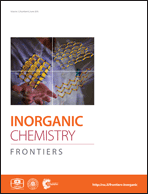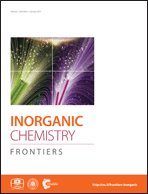The latest Inorg ChemFront issue is published online. ![]()
The cover story, Bimetallic layer-by-layer films and their application in catalytic hydrogenation of olefin is contributed by Shuiying Gao, Weijin Li and Rong Cao.
The inside cover this month features an article on Nanoscopic molecular magnets by Soumyabrata Goswami, Amit Kumar Mondal and Sanjit Konar.
Publish with Inorganic Chemistry Frontiers, benefit from rapid publication, free journal cover and free access to 2014 & 2015 content!













 The cover story,
The cover story, 
 The cover story,
The cover story,  contributed Paolo Falcaro and his colleagues.
contributed Paolo Falcaro and his colleagues.  The cover story,
The cover story, 
 The cover story,
The cover story,  ligands
ligands  The cover story,
The cover story,  The cover story,
The cover story, 
